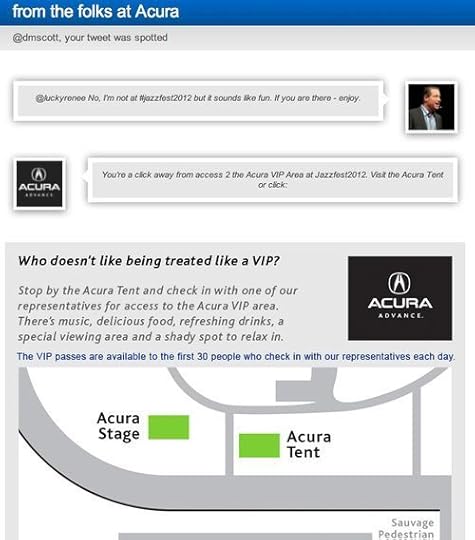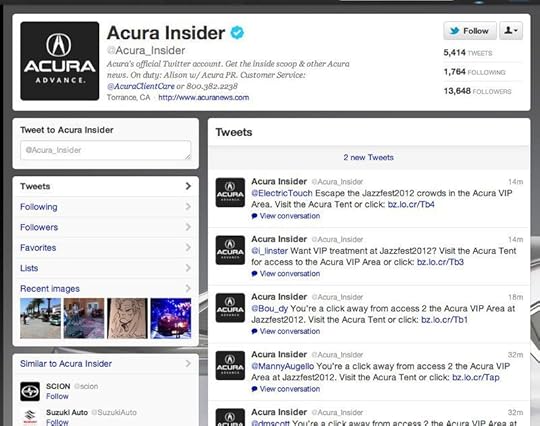David Meerman Scott's Blog, page 85
May 6, 2012
Acura uses Twitter to hashtag spam hundreds
This afternoon, Renee tweeted me from the New Orleans Jazz & Heritage Festival because she knows I am a big live music fan.
I tweeted her back using the #JazzFest2012 hashtag.
Which resulted in a tweet from @Acura_Insider "Acura's official Twitter account. Get the inside scoop & other Acura news. On duty: Alison w/ Acura PR."
This linked to a PURL that offered me a VIP experience at Jazzfest. (In case the PURL has been removed by the time you read this, I have reproduced it below).
Checking the @Acura_Insider Twitter ID, I note that there are hundreds of people who received such a spam message directed at them. In fact, the account is in broadcast only mode. There is no interaction at all, no humans involved. For the past two days the account has been generating hundreds of examples of this nonsense. (I have included a screenshot below).
This is spam. Plain and simple.
Just to be sure, I tweeted back to @Acura_Insider and got nothing. It would appear that nobody is monitoring their feed (heck it's a weekend, why would they be checking Twitter).
I'm not at #JazzFest2012 and anyone can see that from my tweet back to Renee.
I'm sure Acura spent a boatload of money sponsoring Jazz Fest. And they probably paid an agency a bunch of money for this campaign.
Actually, this could have been an interesting use of Twitter had a human been involved. I go to music festivals and it can get hot and I can get tired. If I tweeted that I was tired at #JazzFest2012 and then I got a tweet back inviting me to the VIP area, I would be kinda psyched. I might have taken them up on the offer. Then if I enjoyed it I would have talked it up. That would have worked.
But this machine-generated stuff is not a good way for Acura to generate attention. The negative feelings of those who are spammed far outweigh the good vibes of Acura being onsite.
What do you think? Have I over-reacted?
Anyone from Acura care to comment?
May 5, 2012
Google News now offers real time breaking coverage pages
Today when I checked out the Google News headlines as I do several times a day, I noticed a new feature.
Now, for each breaking story covered, there is a button called See realtime coverage. Clicking the button brings you to the latest news.
This is a cool development. As I've said for several years now the most significant development on the Web is the rise of real-time.
Social media are tools. Real-Time is a mindset.

As I write this, a breaking business story this morning is about Yahoo CEO Scott Thompson and the inaccurate educational information found in his biography. Clicking over to the real-time coverage of this story shows what the latest mainstream media journalists and bloggers are saying. (Note that if you are reading this much after the breaking stories in early May 2012, you may not see any real-time news so I include screen shots in this post.)
If you're clever and you understand how journalists scramble to file breaking news stories quickly, you can insert your ideas into the mix.
I call this technique Newsjacking.
Think about this story for a moment. Who might newsjack it?
An expert in executive recruitment could blog their take on finding a new CEO.
An ethics professor could do a YouTube video with thoughts for CEOs about honesty.
An employment law expert could create a discussion document on the legal ramifications of this situation.
A securities analyst could give the stock price ramifications via an instant PDF report.
What ideas do you have? Get it out there now because now is the time. Journalists are looking for additional angles on this story right now.
The new Google News real-time feature is ideal for Newsjacking. Do what I do and check out Google News a few times a day to see what’s going down and consider how you can add to that discussion.
May 3, 2012
Public relations is not the same as media relations
Back in the day, the only way to easily communicate with your public was to use mainstream media and analysts as your mouthpieces. So the public relations department and the agencies they employed spent a great deal of effort convincing editors, reporters and analysts that your company was one worth talking up.
Prior to the Web, there wasn't an efficient way for organizations to communicate directly to the public.
What's the role of public relations in the new world of the web?
There has been an explosion of channels that organizations can reach their audience directly with valuable online content: videos, ebooks, white papers, photos, infographics, and more – and then have that information shared in social networks.
However, many PR professionals still operate as if their only conduit is mainstream media.
Apologies if you've heard this because I've talked about this many times in the past. But there are still many holdouts so I say it again.
Don't confuse the superset (public relations = reaching the public with your information) with the subset (media relations = using the media to tell your story) and therefore insist that PR is only about mainstream media.
What you need to realize is that these are different activities. Media relations is still valid as a way to get attention. Who doesn't want to be quoted in an important newspaper, magazine, or television broadcast?
Today there are so many other ways to communicate with your publics
If your organization operates this outdated way, my recommendation is to re-name your public relations department the media relations department to reflect what they really do.
In this new world, smart PR pros realize they have a tremendous opportunity if they can effectively communicate directly with the public. They are transforming themselves into content creators. However, most are still operating in the traditional press release and pitching mentality.
If you're an entrepreneur or executive, don't put your PR department in charge of content creation for your company (unless they understand completely the power of the new world).
May 2, 2012
We are the media: Amanda Palmer and the future of your business
On April 6, 2010 after a two year fight Amanda Palmer finally freed herself from her record deal with Roadrunner Records. For the seven years prior to her label divorce, anything she had written and recorded (either solo or with her band, The Dresden Dolls) has technically been owned and under the ultimate control of the label.
Amanda knew she could do better on her own
 So after much planning, Amanda chose a 30-day Kickstarter to fund her new album: amanda palmer & the grand theft orchestra.
So after much planning, Amanda chose a 30-day Kickstarter to fund her new album: amanda palmer & the grand theft orchestra.
As I write this, within two days, more than 6,000 people have backed the project with an incredible $350,000. And there are 29 days to go. (Each time I refresh Amanda’s Kickstarter page, the total grows.)
One fan at a time
Amanda connects with her fans every day and has built a tremendous fan base. She's very active on social networks - 550,000+ Twitter followers at @AmandaPalmer for example. Her site is a great example of a content rich resource for fans and her blog is always a great read (often with hundreds of comments on a post).
Regular readers of this blog may recall that I’ve written about her before in these posts: How Amanda Palmer made $11,000 on Twitter in two hours (which contains my wide ranging video interview with Amanda) and Amanda Palmer divorces her record label.
Crowdsourcing a new record and a new band
Rather than going the traditional route and having a label fund her new record, Amanda is going directly to her fans via Kickstarter.
Amanda writes: "since i'm now without a giant label to front the gazillions of dollars that it always takes to manufacture and promote a record this big, i'm coming to you to gather funds so that i have the capital to put it out with a huge fucking bang. i think kickstarter and other crowdfunding platforms like this are the BEST way to put out music right now - no label, no rules, no fuss, no muss. just us, the music, and the art. i'm also making sure EVERY PRODUCT sold through this kickstarter is unique to this campaign, to reward all of you who KNEW ME WHEN and were willing to support me from Day One."
There are packages starting at just $1 (a digital download of the album) to $10,000 (dinner with Amanda plus all sorts of extras). I dig the $5,000 level, which includes Amanda coming to your house for a party. The package I chose was a pledge of $300 and includes tickets to a VIP party and intimate show with Amanda and the band in Boston (there are similar options in other cities).
We are the media: Amanda Palmer and the future of music
In just a few days, Amanda has raised more money via her fans than she would have gotten from her label for producing her album. And she retains complete control. Who knows how much she might end up with at the end of the month?
To succeed at this technique, a musician has got to build a fan base one person at a time. Social media is a great way to connect before and after the live gig, but the personal connection is essential.
"Being a touring musician means meeting fans," Amanda told me. "I go out and meet fans after every gig. It's important to make contact in real life and not just online in social media like Twitter. If you don't meet fans in real life too, then you're a fraud. If you're not comfortable getting into the sweat with them and talking with people at shows, then how can you do it successfully online? I love connecting with fans. Speaking to people at the merchandise table after the show is great. I can stay there forever."
The future of your business
If you read this blog, you know that I am a huge live music fan. I see parallels to all kinds of businesses – including yours.
While your work may be completely different from that of a rock star, Amanda has something to teach you.
Your product comes first and must be created with passion. You’ve got to engage with your customers on a human level. Social networking can help you build your fan base. And if you do these things well, you can build a great company and a fantastic career.
April 30, 2012
Say it with fewer words
My blog posts always seem to be long. Sometimes as much as 500 words (or more). I find it difficult to say something in just a few words.
But we're all busy with so many things demanding our attention. When you see a long blog post, are you eager to read it? Maybe not.
Brevity: "the attribute of being brief or fleeting."
Sometimes brevity is best. I'm trying to say things with fewer words.
April 24, 2012
Lindsey shows how to market to millennials and how to get a first job
Last month I wrote a post called Tough love for marketing and PR job seekers. In it I challenged you to prove you are a great marketer by showing, not telling. I said that you need to create content that will brand you as someone to hire. Now. Starting today.
I've delivered this advice to hundreds of people. Sadly for them, I know from experience that nearly all ignore this advice.
Lindsey Kirchoff, as I write this a graduating senior at Tufts University, is in the tiny minority. She eagerly took up the challenge and started a terrific blog How to Market to Me.
 In her blog, Lindsey offers her opinions on how to market to millennials like her. She says: It's my opinion. It's about the advertisements that "get" me as a collegiate and twentysomething consumer. The companies that understand my values, participate in my humor and reach me when/where I’m most likely to need them. It's also about companies that don't do any of those things and how they can better reach me (and people like me) in the future.
In her blog, Lindsey offers her opinions on how to market to millennials like her. She says: It's my opinion. It's about the advertisements that "get" me as a collegiate and twentysomething consumer. The companies that understand my values, participate in my humor and reach me when/where I’m most likely to need them. It's also about companies that don't do any of those things and how they can better reach me (and people like me) in the future.
Lindsey is currently on the hunt for a job at a mid-to-large marketing firm with a strong entry level program to help her really learn the industry. She says: "And I wouldn’t complain if I could relocate to somewhere sunny (I’m looking at you Austin, San Francisco and Nashville)."
If I was hiring new graduates, I'd jump to hire Lindsey before anyone else does.
After my speech at the Microsoft Worldwide Partner Conference in July, 2011, I had the opportunity to speak to a group of interns at Microsoft.
I provided the same advice I offered to Lindsey about getting a great first marketing job. Part of the discussion was filmed and I offer it here.
Direct link to the video here.
If you know someone looking for that first marketing or PR job, please share this post with them.
Disclosure: I got to know Lindsey because my book The New Rules of Marketing and PR is used at Tufts and I reached out to a professor there looking to hire an intern on a project for the Massachusetts Air and Space Museum. Lindsey has been working directly with me on that project.
April 20, 2012
Bob Marley and me

This week "Marley," the new Bob Marley documentary hits the screens in many countries. Naturally, the official U.S. release date is 4/20. The film is terrific and I have a small role in finally telling the reggae legend’s story on film.
While in New York City after a gig at Madison Square Garden, Bob Marley learned that he had terminal brain cancer. He headed to Pittsburgh anyway, travelling by bus with his band The Wailers for a gig at the Stanley Theater two days later in what turned out to be his final concert on September 23, 1980.
Road Trip
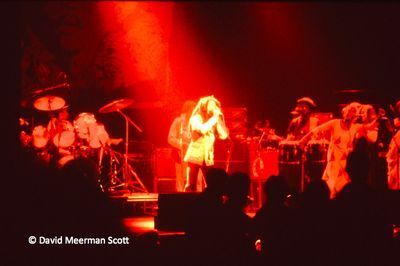 On that same day 32 years ago I also road tripped to the Stanley Theater to be at the show, although nobody in the crowd knew what the world would learn soon after, that Marley was very, very sick.
On that same day 32 years ago I also road tripped to the Stanley Theater to be at the show, although nobody in the crowd knew what the world would learn soon after, that Marley was very, very sick.
I was a sophomore at Kenyon College in Ohio at the time. Having grown up a rock kid in the suburbs of New York City, I was already a concert veteran by then, having caught dozens of bands like Led Zeppelin, Aerosmith, The Ramones, Black Sabbath, Frank Zappa, and the Grateful Dead plus classic blues artists like Muddy Waters and Albert King.
But when I first heard Bob Marley blasting from my friend Ned’s dorm room at the beginning of freshman year, it was like nothing I had heard before. I was hooked and bonded immediately with the others partaking in Marley’s music and all that goes with it.
My friends and I just had to be at that Stanley Theater show, so we drove four hours to catch it. For some reason, I felt compelled to borrow a friend's excellent camera outfit complete with telephoto lens. It was a cosmic thing because I had never brought my own camera to a show before. Since the big Canon looked "official" back in the days of film cameras, the staff let me fire away from anywhere I wanted. Somehow I managed to focus the unfamiliar camera even though we had "prepared" for the show for the entire drive.
The show was epic. The i-Threes opened (Marley's wife Rita Marley, plus Judy Mowatt and Marcia Griffiths) and I still recall them swaying in time to the music. They did three songs before Bob came out to thunderous applause. He was dancing the entire 90 minute show except for the acoustic "Redemption Song" which he performed laid back and solo. They did three encores as if Bob just didn't want to leave the stage. Nobody in the audience knew that Bob was sick. His energy level was extremely high and he had total command of the audience.
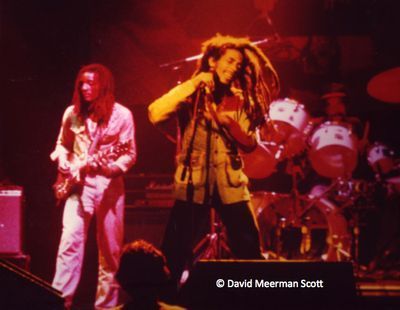 My resulting photos didn't see the light of day for several decades. Then 2 years ago, the Marley family released a live album of that Stanley Theater show.
My resulting photos didn't see the light of day for several decades. Then 2 years ago, the Marley family released a live album of that Stanley Theater show.
Content drives action
When I noticed that the photos used in the live album packaging were not actually from the Stanley gig, I left a message in my Amazon review of the CD: "If anyone from the label reads this, I have some great photos from the show."
Little did I know that a film was in the works from Academy Award-winning director Kevin Macdonald.
"One of the challenges with Bob is that there's so little great archive footage," says Macdonald. Marley's last show was a critical aspect of the film and there was no video or photo record... except mine.
The weird vibe of borrowing the camera and reviewing the CD came full circle when the filmmakers, who had read those reviews, contacted me.
I'm not trying to make a marketing lesson out of this story, but had I not posted content in the form of that Amazon review of the CD, the world would never have seen photos of Bob Marley's last concert.
"Of course you can use my photos!," I said. And for a little added ego boost, I got a credit in the film.
"Marley" the film
In the trailer, the first two stills are mine.
Direct link to "Marley" trailer on YouTube.
"Marley" is a terrific film even if you aren’t a fan. My wife watched the screener with me and she loved it too.
Bob Marley's universal appeal, impact on music history and role as a social and political prophet has only grown in the past three decades. "Marley," is the definitive life story of the musician, revolutionary, and legend, from his early days to his rise to international superstardom. Made with the support of the Marley family, the film features rare footage, incredible performances and revelatory interviews with the people that knew him best.
Bob Marley's music became an important part of my life. So much so that on a visit to Jamaica in the mid-1980s, I even traveled several hours by car to Bob's childhood home in the village of Nine Mile in Saint Ann Parish.
"I think what's great about the film," says Bob's oldest son, David "Ziggy" Marley, "is though there's been a lot of things done on Bob, I think this one will give people a more emotional connection to Bob's life as a man. Not just as a reggae legend or a mythical figure, but his life as a man, you know? The struggles he went through."
Ziggy is right. The film does provide an emotional connection to Bob Marley. I'm amazed that through some remarkable serendipity and cosmic 420 vibes, I played a small part in bringing this story to the world.
April 19, 2012
open cycle launches today and is a company to watch
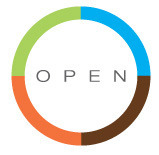 open cycle, the new project from Gerard Vroomen, officially launches today.
open cycle, the new project from Gerard Vroomen, officially launches today.
Back in 2006 when I was looking for interesting examples of companies for inclusion in the first edition of The New Rules of Marketing and PR (now in its third edition) a cycling friend told me about Cervelo. I checked out the site and quickly learned Cervelo was a content marketing pioneer so I interviewed Gerard, a co-founder of the company.
Back then, Gerard told me that he is an engineer, not a marketer. He said that Cervelo does not have any marketing experts.
Yet, in the past six years, Cervelo has generated much more attention than their bigger rivals and has grown quickly into one of the most important bike companies in the world.
Yes, Cervelo has awesome products used by the top road racers and triathletes. But the content on the Cervelo site as well as their attention to social networks, built to educate and inform and keep the community involved, has been instrumental in the company's success.
I've kept up with Gerard via social media and this past January went on an expedition with him into the jungles of Panama where he told me about selling Cervelo and shared his vision for a new company called open cycle which he is launching today.
open cycle
open cycle, co-founded by Gerard and his partner Andy, is producing high-end mountain bikes unlike any other on the market.
As they say on the site:
 "Three words describe this new venture: bikes, open and simple.
"Three words describe this new venture: bikes, open and simple.
Bikes we live and breathe. Andy's career spans from downhill racer (back when helmets were optional!) to CEO of a mountain & road bike company. Gerard’s career includes co-founding Cervélo, where's he's done everything from engineering and design to sales, supply chain and marketing.
Open means open to new ideas; from our customers, retailers, vendors and ourselves. Open to show the intricacies of our products but also our company. Open even to issue shares to some of our customers.
If open is the goal, simple is the tool.
'Relentless simplicity' is our guiding principle. Reduce the number of models and you simplify production, logistics, customer decision making, the website, everything. Avoid traditional advertising or sponsorships and free up precious time. Transfer logistics to third parties and you can focus on what matters most, which in our case means:
Designing better bikes, the first of which we introduce here.
Connecting with our customers.
And when you put it that way, is there really anything else to do?"
An unfolding marketing case study still in its infancy
open cycle is a marketing example to watch because we will witness a social media and content marketing enthusiast launch a company from day one.
Right from the start, the company is focused on social engagement throughout the site, with community aspects and social network links. Anyone can comment on anything. They are committed to having the community of enthusiasts help them so everything is open.
The open cycle site also features a blog. What's interesting is that Gerard and Andy have been blogging for a year as they’ve secretly developed the technology for their new bike. But the blog posts went unpublished until now. Kind of cool, don't you think?
Are you a marketer?
A few days ago I revisited the question I asked in 2006 when I again asked Gerard about marketing. As I wrote way back then, I think he is a marketer extraordinaire, but he always pushes back:
"To be honest, I don't think of it as marketing," Gerard says. "It feels simply like talking to people. And companies like Facebook, Twitter, et al have given us some interesting ways to do that.
They turn companies such as open cycle into the global version of the village baker of yesteryear (to paraphrase Gary Vaynerchuk). You know your customers, they know you, so you want to treat them well. You want to give them good quality and they tell their neighbors. You mess up and you feel bad and try to make it right. The opposite of what's happening at many companies today (Goldman Sachs anyone?)
And of course, the flipside is that if you don't treat them well, they'll tell the rest of the village."
I'll be updating the progress of open cycle from time-to-time in the next months and years and expect great things from Gerard and Andy.
April 16, 2012
LinkedIn 4x better for B2B leads than Facebook or Twitter says HubSpot study
I'm presenting at the LinkedIn #B2BConnect 2012 event today - April 17, 2012 - in Mumbai, India.
A few weeks ago as I was preparing my talk, I asked my friends at HubSpot if they had any data on the effectiveness of LinkedIn that I could share with my audience. Rebecca Corliss came through with some awesome new data which I am releasing for the first time here.
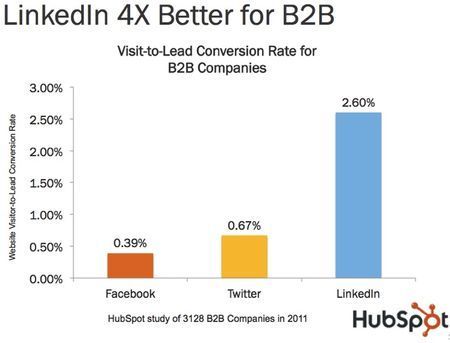 In a study of 3,128 HubSpot B2B customers, LinkedIn generated the highest visitor-to-lead conversion rate at 2.60%, four times higher than Twitter (.67%) and seven times better than Facebook (.39%).
In a study of 3,128 HubSpot B2B customers, LinkedIn generated the highest visitor-to-lead conversion rate at 2.60%, four times higher than Twitter (.67%) and seven times better than Facebook (.39%).
The methodology was a data dump of all of HubSpot customers' social media traffic and leads collected through the HubSpot system in 2011. From there, data was segmented to look at B2B companies that had generated visits and leads from social media. Companies that generated less than two leads in the year were excluded from the sample.
Lead generation with LinkedIn
This data clearly shows that LinkedIn is a good lead source. But few B2B companies use LinkedIn to its full potential.
To help you, HubSpot has published a free ebook Learning LinkedIn From the Experts: How to Build a Powerful Business Presence on LinkedIn. In it, five LinkedIn specialists provide insight into how you can use LinkedIn to successfully grow your network and business. Or just check out the HubSpot LinkedIn company page to see the potential of what LinkedIn can do.
Disclosures: I am on the HubSpot board of advisors and I serve as Marketer in Residence for the company. I am being paid to speak at the LinkedIn #B2BConnect 2012 event.
April 12, 2012
GolinHarris shows how an agency does real-time communications right
For the past several years, I've written and spoken extensively about the idea of real-time marketing & PR, the subject of my Wall Street Journal bestseller, now published in eight languages.
The biggest challenge of implementing real-time is one of mindest. It is tough for marketing and PR people who operate in the typical long-term planning of "campaigns" to adapt to instant engagement. This seems to be especially true of agencies that have built a business around implementing campaigns for their clients.
GolinHarris shows how an agency does real-time communications right
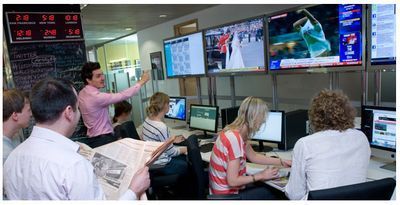 I was intrigued with the GolinHarris real-time approach of what they call "The Bridge" - a network of real-time storytelling centers - staffed in the Americas, EMEA and Asia Pacific.
I was intrigued with the GolinHarris real-time approach of what they call "The Bridge" - a network of real-time storytelling centers - staffed in the Americas, EMEA and Asia Pacific.
This Wall Street trading room approach is exactly what I've constantly talked about and I'm excited to see it being implemented so I connected with Jim Dowd, Executive Director, National Media for GolinHarris, to learn more.
"We use The Bridge as a listening outpost but we are doing it a little differently because we have the mainstream media folks and the digital folks working side by side," Dowd says. "So we are not just looking at social media which is obviously the flavor of the day. Digital and mainstream are literally sitting next to each other and they are coming up with ideas and are pitching media together and that is where we have seen just terrific traction."
For example, on the day that Michelle Obama announced a new food pyramid called MyPlate, the GolinHarris team watched the press conference live on CNN looking for ways to get their clients into the emerging memes. "We are watching all the activity online and took an idea to Hartz to create a food pyramid for dogs," Dowd says. The client loved the idea and reacted quickly. The team generated some attention as a result.
Generating quick client approvals
With most clients working at a glacially slow pace, requiring lengthy legal and PR client-side reviews, I wondered how GolinHarris is able to get speedy signoffs on ideas generated from The Bridge.
"Yeah, approval is always tricky particularly with legal departments," he says. GolinHarris works with clients to develop topics ahead of time in anticipation of potential stories so that they can work quickly. "With clients like McDonalds we have general topics that we predict, like if something comes up about the Happy Meal. McDonalds have preapproved that we can have certain conversations about Happy Meals with language we can go out with."
Just like a 24-hour Wall Street bond trading desk
The Bridge is set up just like a 24 hour Wall Street trading desk with three regions – Asia, Europe, and North America - passing the work around the globe.
"We are truly doing it globally," Dowd says, "We are 24/7 so we will scour the landscape the first few hours of the day here in New York then we will pass all of our results and insights onto Chicago and Chicago to LA. And you know, the whole notion of offices and cubes may go away. It's exciting to be able to walk in The Bridge and literally see what is going on."
Newsjacking the Super Bowl
When you have a real-time mindset and the tools of a facility like The Bridge, then Newsjacking becomes second nature.
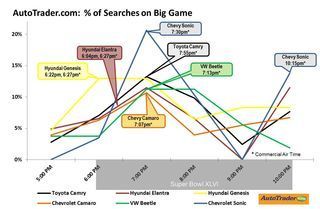 "Our client AutoTrader.com challenged us to make them the leader in all of the post- Super Bowl auto commercial coverage," Dowd says. AutoTrader.com did not advertise during the Super Bowl but wanted to generate a bunch of attention anyway - a classic newsjacking strategy.
"Our client AutoTrader.com challenged us to make them the leader in all of the post- Super Bowl auto commercial coverage," Dowd says. AutoTrader.com did not advertise during the Super Bowl but wanted to generate a bunch of attention anyway - a classic newsjacking strategy.
AutoTrader's analysts worked with GolinHarris to create data on consumers' real-time search patterns during the Super Bowl. They used data from the AutoTrader.com site and correlated that to the times auto commercials aired looking for lift (how much of a boost in search activity each vehicle got in the hour after its ad appeared). They provided the resulting data to the media who used it in stories like Acura NSX Won Big with Super Bowl Spot, Survey Says which appeared on the Wall Street Journal site.
Overcoming fear
"There are lot of clients who love the notion of the bridge and real time marketing and what we are doing but aren't jumping on it out of fear - fear of the unknown, fear of the new," Dowd says. "A lot of our clients are still quite old school and traditional."
There's nothing like success to break down the fear barrier.
Dowd cites Dow Chemical as a noteworthy GolinHarris real-time success. The company is very careful with stories related to such topics as chemistry or chemical engineering or stem research but that doesn't mean they can't engage in real-time.
"We were in The Bridge tracking that President Obama was going to give the Teacher of the Year Award and we were watching live on CNN," he says. "And it was a chemistry teacher who won that award so we immediately got approval from Dow Chemical to go ahead and offer up public congratulations to the teacher and that resulted in some nice coverage. Even with the trickier clients there are always topics that will work."
Images courtesy of GolinHarris





